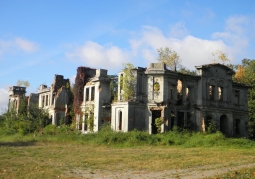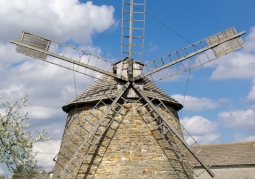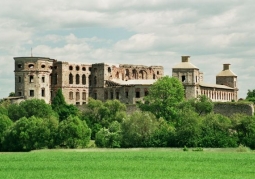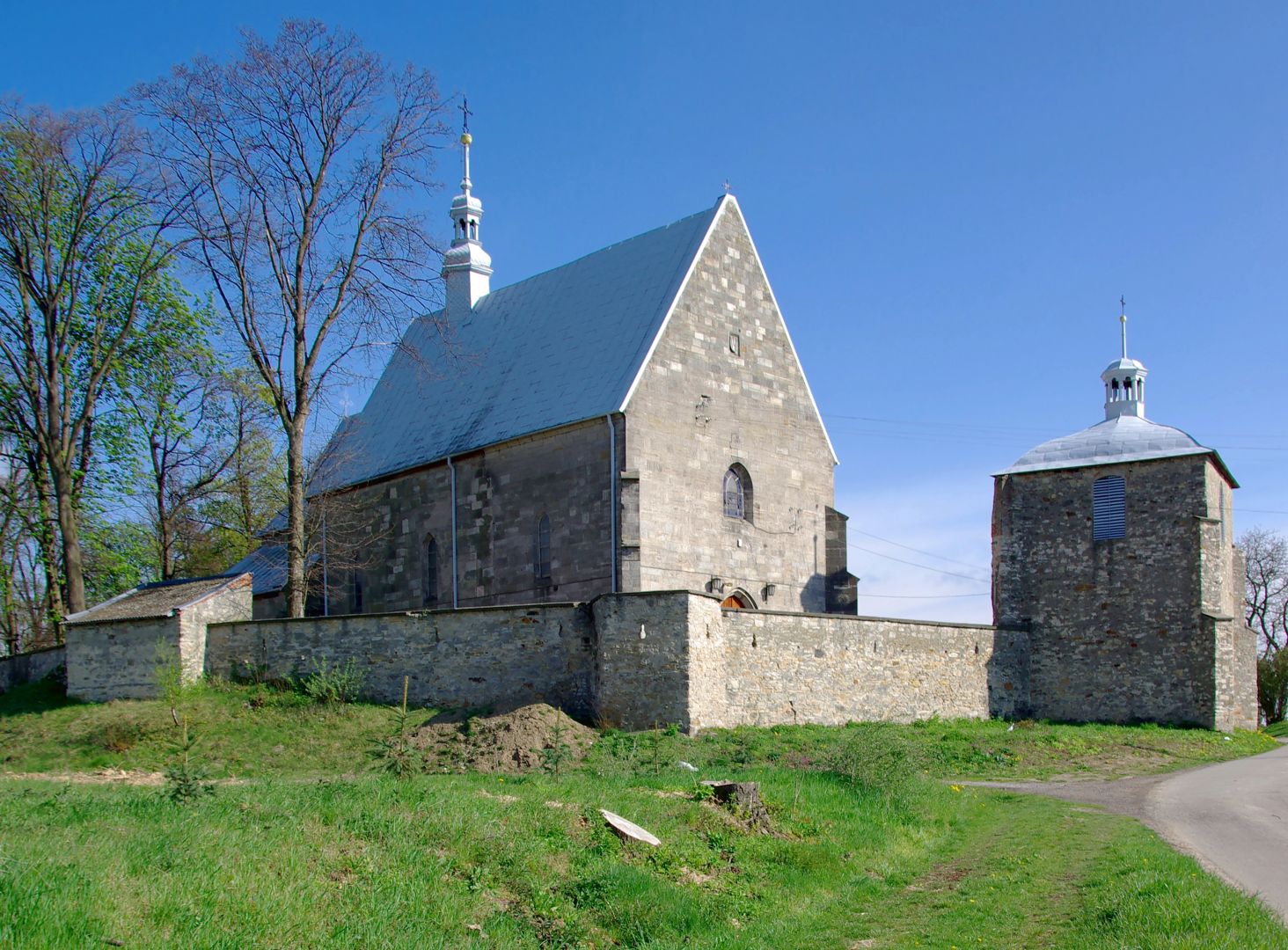Gothic church Saint Giles Abbot - Ptkanów
No weather data
0.0 /5
Number of ratings: 0
Located on a hill, the defensive, Gothic church stands on the remains of an older brother from the 12th century. At the top of the front facade, on the west side, there is a stone shield with the coat of arms of Grzymała. The temple is surrounded by a defensive wall from the 16th century with towers and shooting ranges. From the same period comes the church belfry, which served as a gate tower. Fragments of the frieze decorated with plant and animal motifs have survived on its walls. The presbytery of the church is closed polygonally and covered with a rib vault. There is a barrel vault in the sacristy. During the reconstruction, a neo-Gothic porch was added to the church. The church's equipment comes from the beginning of the 20th century (the previous one was destroyed during a fire). On the main altar there is a picture of St. Idzi painted by Kazimierz Alchimowicz. A sundial is located in front of the church on the south side.
Komentarze
No results
Nearby places

St. Collegiate Church Martin's - Opatów
Category: ChurchesThe most valuable monument of Opatów, it occupies a unique place among the monuments of Romanesque architecture in Poland. It is one of the few well-kept buildings of this type. From the twelfth century to our time,...
5 km

Karski Palace - Włostów
Category: PalacesA neo-Renaissance palace erected in 1854-1860 at the request of Stanisław Karski in the village of Włostów, with a surrounding park of approximately 10 hectares. The palace itself consisted of 30 rooms, including...
10 km

Dutch windmill - Szwarszowice
Category: Mills and windmillsBrick Dutch windmill, built in the 19th century. The building was erected by Józef Kaczmarski in 1880-1885. It is a big attraction for those passing through Szwarszczowice and a beautiful element of the passing...
14 km

Krzyżtopór Castle - Ujazd
Category: LocksThis is actually a palace mistakenly called a castle. Built in the Italian style of the palazzo in fortezza (i.e. a residence combining the comfort of residents with a defensive function) in the years 1627–1644 by...
17 km
Nearby places

St. Collegiate Church Martin's - Opatów
Category: ChurchesThe most valuable monument of Opatów, it occupies a unique place among the monuments of Romanesque architecture in Poland. It is one of the few well-kept buildings of this type. From the twelfth century to our time,...
5 km

Karski Palace - Włostów
Category: PalacesA neo-Renaissance palace erected in 1854-1860 at the request of Stanisław Karski in the village of Włostów, with a surrounding park of approximately 10 hectares. The palace itself consisted of 30 rooms, including...
10 km

Dutch windmill - Szwarszowice
Category: Mills and windmillsBrick Dutch windmill, built in the 19th century. The building was erected by Józef Kaczmarski in 1880-1885. It is a big attraction for those passing through Szwarszczowice and a beautiful element of the passing...
14 km

Krzyżtopór Castle - Ujazd
Category: LocksThis is actually a palace mistakenly called a castle. Built in the Italian style of the palazzo in fortezza (i.e. a residence combining the comfort of residents with a defensive function) in the years 1627–1644 by...
17 km

